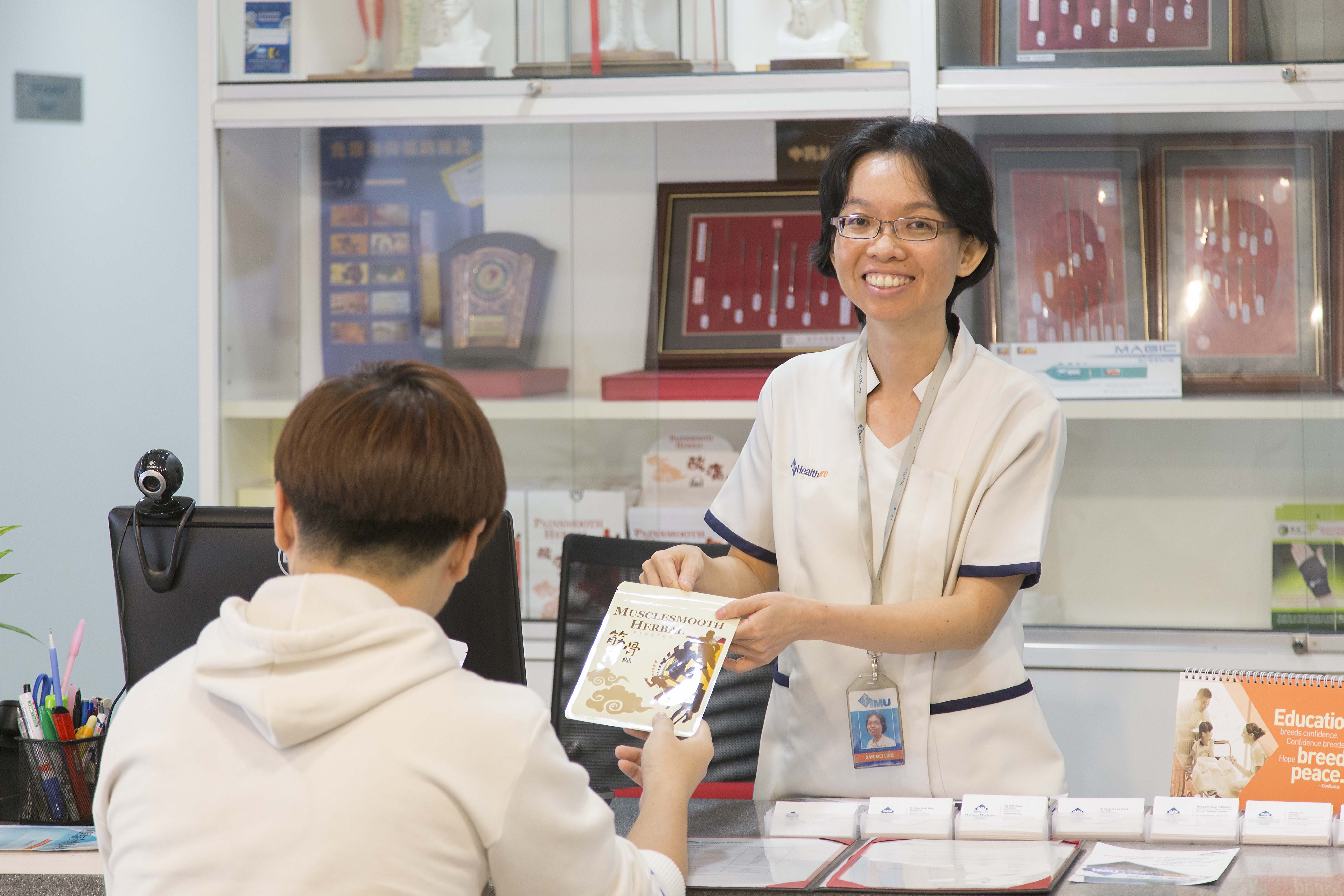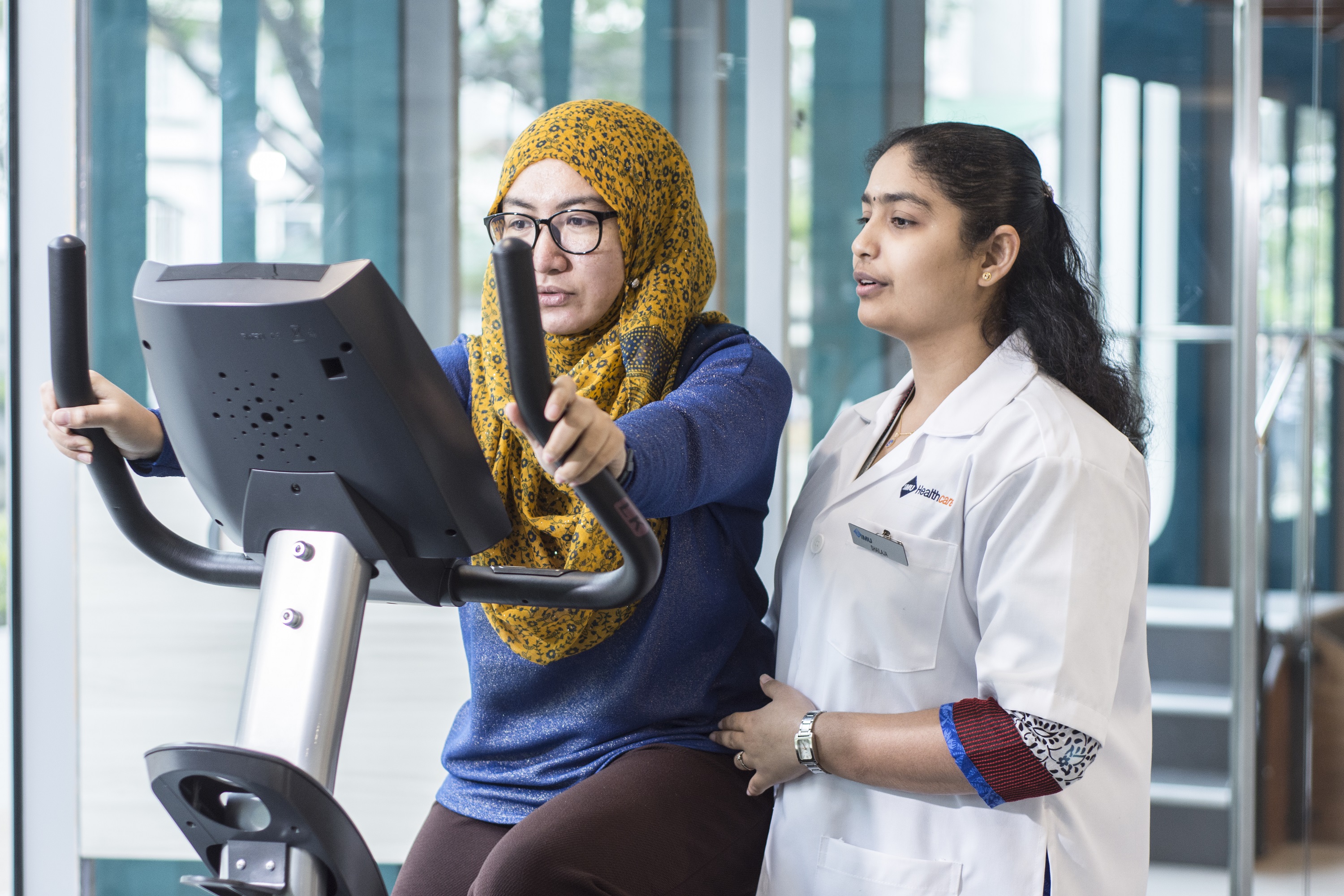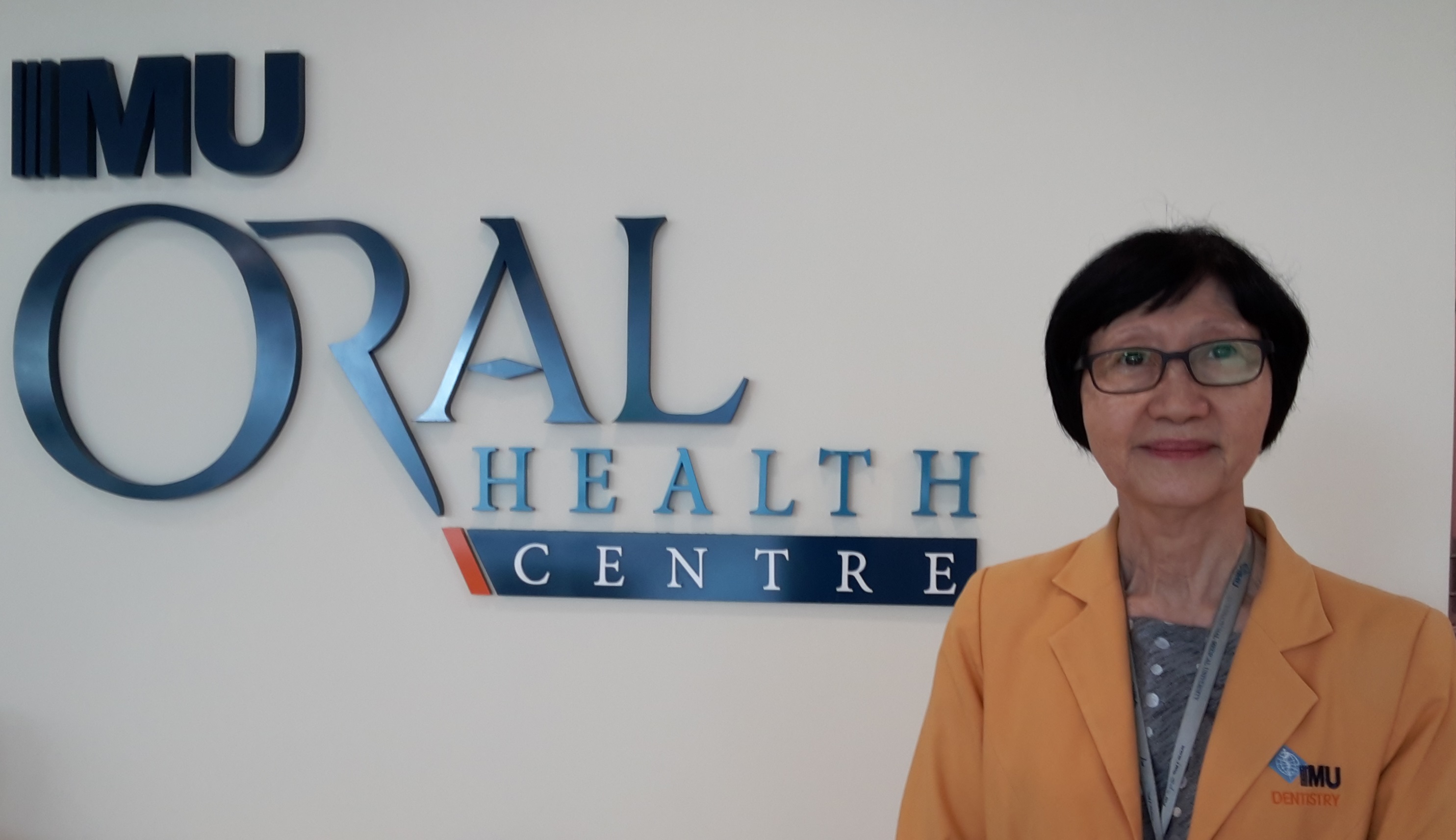Apart from our nursing staff, the other group of individuals patients will interact with most frequently are our frontliners. These are the ladies who man the counters of the respective clinics and specialty centres. Their duties are many and varied, but they are united on one front: to make any patient’s visit as comfortable and stress-free as possible. Here are some of the people you may meet: The Smiley East Malaysian
 Christie Mata is a familiar face to many patients who visit the IMU Healthcare Chiropractic clinic. The petite Sarawakian can often be found at the department’s registration desk, checking in patients for their appointments, or bustling about in response to the specialists’ needs. Frequently, you can see her exercising along with the patients as well when necessary. Other than in the clinic, she can also be seen cheerfully helping out at IMU Cares community events.
Christie Mata is a familiar face to many patients who visit the IMU Healthcare Chiropractic clinic. The petite Sarawakian can often be found at the department’s registration desk, checking in patients for their appointments, or bustling about in response to the specialists’ needs. Frequently, you can see her exercising along with the patients as well when necessary. Other than in the clinic, she can also be seen cheerfully helping out at IMU Cares community events.
She was inspired to venture into healthcare when she found herself in a hospital for appendicitis. “In 1999, I needed to have my appendix removed. While in hospital I was very taken by the way the nurses went about their work. They seemed to have a very clear sense of purpose. I watched them take care of patients, including myself, and I decided that it was what I wanted to do too. I wanted to help people too. After I qualified in Allied Health, I found healthcare to be everything I thought it would be. Each day brings something different, but all my patients are united by one thing: pain. In the beginning they come in with such terrible pain that they are short-tempered and snappy. After a few visits with the chiropractors, their pain eases and they come out of the treatment room with a smile. Their smile is my favourite reward!
I have been at IMU Healthcare for four-and-a-half years. I have been a part of many patients’ journeys to better health. My favourite patient is the 70-year-old lady who first came in a wheelchair and then progressed to a walker. She now walks in by herself for chiropractic treatment. This is real healthcare in progress!”
The Yin and Yang Heart Sam Mei Ling is the Chinese Medicine clinic’s Front Desk Administrator. She registers patients and ushers them into the treatment rooms. If you find the treatment rooms particularly spick and span, it is most probably because Mei Ling has ensured that it is ready for each new patient.  “I’ve been at IMU Healthcare for two years, and I’m really happy with this job. Chinese Medicine patients generally don’t come with major health issues, so I regularly get to see the patients rebounding quickly, with improvements being seen after nearly every treatment. I like to think I play a part in their better health by assisting the Chinese physicians with acupuncture or moxibusion. I also weigh and pack the medicines prescribed by the doctors and advise patients on their consumption.”
“I’ve been at IMU Healthcare for two years, and I’m really happy with this job. Chinese Medicine patients generally don’t come with major health issues, so I regularly get to see the patients rebounding quickly, with improvements being seen after nearly every treatment. I like to think I play a part in their better health by assisting the Chinese physicians with acupuncture or moxibusion. I also weigh and pack the medicines prescribed by the doctors and advise patients on their consumption.”
Although Mei Ling enjoys getting to know patients, she is happiest when she no longer sees them. “If I don’t see a regular patient, chances are that they are well and no longer have the need for treatment. That’s a good thing. But there are sad stories too. I have seen people who came to consult our Chinese medicine doctors as a last resort, when all else had failed. But by that time, it was too late, and I am always very sad when I hear they have passed on. It reminds me that it is important to always be proactive about your health, and not to take it for granted. Chinese medicine is all about ensuring balance in an individual. People should consider seeing Chinese medicine doctors as part of their wellness plan, and not just when they are sick.”
The Cheerleader  Physiotherapist Shailaja Tholkabian wanted to be a chef, until her uncle commented on how good she was with her hands, and introduced physiotherapy to her. Although it was a challenge, as she had been an Arts-stream student throughout her years in school, she persevered because she felt she had a true calling. “My role is to treat patients with back pain, neck pain, stroke and scoliosis, among others. I like treating kids the best, as it is so much fun to be with them. It is also easier to make them understand why they need to do their exercises. The hardest thing about my job is convincing people that the rehab department is not a massage centre. Patients who are recovering from an injury need to know that physiotherapists can only assist in designing their exercises for them and overseeing as well as “cheering” them on as they do it. The exercises will not help one bit if they are not done regularly. And they have to be done by the patients themselves, not by the physiotherapist!”
Physiotherapist Shailaja Tholkabian wanted to be a chef, until her uncle commented on how good she was with her hands, and introduced physiotherapy to her. Although it was a challenge, as she had been an Arts-stream student throughout her years in school, she persevered because she felt she had a true calling. “My role is to treat patients with back pain, neck pain, stroke and scoliosis, among others. I like treating kids the best, as it is so much fun to be with them. It is also easier to make them understand why they need to do their exercises. The hardest thing about my job is convincing people that the rehab department is not a massage centre. Patients who are recovering from an injury need to know that physiotherapists can only assist in designing their exercises for them and overseeing as well as “cheering” them on as they do it. The exercises will not help one bit if they are not done regularly. And they have to be done by the patients themselves, not by the physiotherapist!”
Shailaja also wants people undergoing rehabilitation or physio to understand that pain does and will occur when patients do exercises. “Pain is a normal part of the healing process. It happens because the body is re-learning how to move again. A person needs to be persistent about working that affected part. A person in chronic pain should have a physio session twice a week so that the affected part does not get stiff again. Generally, patients will need eight to 12 sessions before they are fully functional.”
When patients are well enough and do not need physio anymore, Shailaja ensures that she keeps track, emailing them new exercises for the different phases of recovery. “Generally I find that people with the most discipline and determination are those who recover a great deal faster than those who shirk the effort needed in physiotherapy. I do make it a point not to let my patients shirk, no matter how long it takes to complete a set of exercises.” It is like life: both parties, patient and physiotherapist, must work together to make the recovery a complete success. A Smile for My Heart Loh Ann Nee is the Manager who ensures the smooth-running of the Dental Skils Centre. She has been with IMU for more than six years and has seen its exponential growth in this short time. She reminisces, “When I joined, my first task was to ensure Oral Health Centre was fully equipped with sufficient instruments, materials and equipment where Semester 5 students would treat the public, in preparation to become full-fledged dentists. In 2010 there were only 38 students. We now have over two hundred…!” Strangely enough, Ann Nee was not supposed to have been in the field of oral health. Having set her heart on being a fashion designer and studying in Tokyo, she was whiling away time between her intake when she decided to go to the United Kingdom to do a secretarial course before heading to Japan. A friend who was studying to be a dental nurse persuaded her to tag along for the course, and Ann Nee found herself at the top of the class. She then applied for, and got, a British grant, which allowed her to save money on her tuition, so it was a done deal. Having trained both as a dental nurse and a dental hygienist, Ann Nee joined University Malaya where she worked until past retirement. She was then asked to be part of the team at IMU’s dentistry programme, overseeing both the Oral Health Centre and the Dental Skill Centre (DSC).
“I now concentrate more in DSC where I ensure there are enough instruments and equipment for the students and staff to use. I also need to ensure enough material for the students and staffs to fabricate the crowns, bridges, dentures and mouth guards, ortho retainer that are used for training, teaching purposes and also to treat patients. Other than this, I am in charge of budgeting, stock control, staffing and also coordinate the staff to assist in the students’ examinations. Last but not least, assist in CPD courses for academic and corporate staffs as well as the coming Postgraduate Implant Course.” Ann Nee is not one to shy from change, especially if it is a positive one. The way dental healthcare for children is approached now is far superior to the old days. She shares, “In those days dental nurses used to go to schools to give check-ups. Because of the lack of awareness in dental care, many children ended up getting teeth pulled, giving these travelling dental clinics a very bad, frightening reputation. That is why kids used to hide in the toilets when these vans came around.” “Now however, kids as young as around four are already brought to the dentist, in order to start them off positively on their road to good oral health. Because they have started seeing dentists earlier, and for non-invasive procedures, there is less negative connotation to dentists, meaning kids will be more relaxed even if an extraction is necessary.”
“At the end of the day, what makes me happiest is to see a patient smiling from molar to molar after their dental treatment. That big smile gives me satisfaction.”
This article is brought to you by IMU Healthcare.










